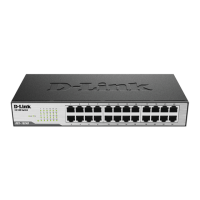3
Switching Technology
Switching is a cost-effective way of increasing the total network capacity
available to users on a LAN. If an Ethernet network begins to display
symptoms of congestion, low throughput, slow response times, and high rates
of collision, installing a switch to a network can preserve much or all of the
existing network's cabling and workstation interface card infrastructure,
while still greatly enhancing the throughput for users. A switch is a viable
solution even if demanding applications, such as multimedia production and
video conferencing, are on the horizon. The most promising techniques, as
well as the best return on investment, could well consist of installing the right
mixture of Ethernet switches.
A switch increases capacity and decreases network loading by dividing a
local area network into different LAN segments. Dividing a LAN into
multiple segments is one of the most common ways of increasing available
bandwidth. If segmented correctly, most network traffic will remain within a
single segment, enjoying the full-line speed bandwidth of that segment.
Switches provide full-line speed and dedicated bandwidth for all connections.
This is in contrast to hubs, which use the traditional shared networking
topology, where the connected nodes contend for the same network
bandwidth. When two switching nodes are communicating, they are
connected with a dedicated channel between them, so there is no contention
for network bandwidth with other nodes. As a result, the switch reduces
considerably, the likelihood of traffic congestion.
For Ethernet networks, a switch is an effective way of eliminating the
problem of chaining hubs beyond the “two-repeater limit.” A switch can be
used to split parts of the network into different collision domains, making it
possible to expand your Ethernet network beyond the 205-meter network
diameter limit for 100BASE-TX networks. Switches supporting both
traditional 10Mbps Ethernet, 100Mbps Fast Ethernet, 1000Mbps Gigabit
Ethernet are also ideal for bridging between existing 10Mbps networks,
100Mbps networks, and new 1000Mbps networks.

